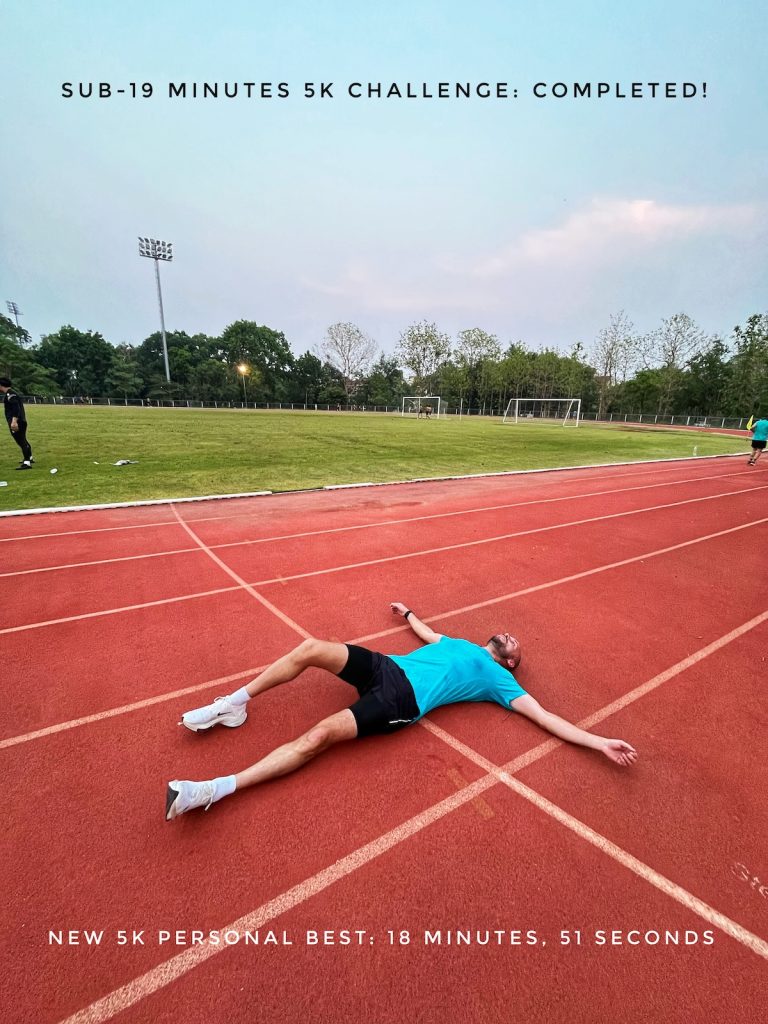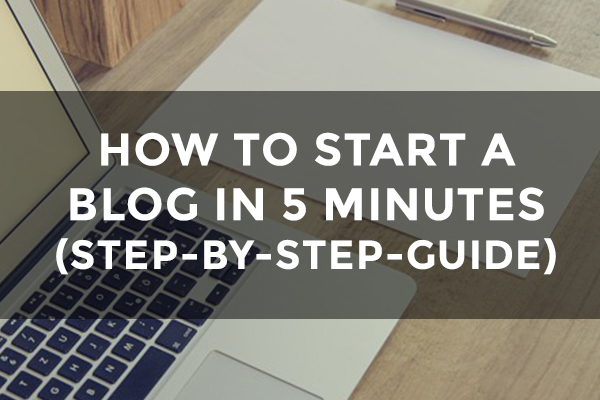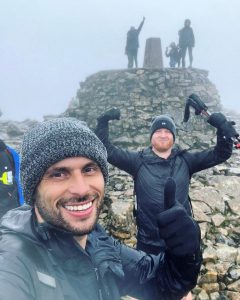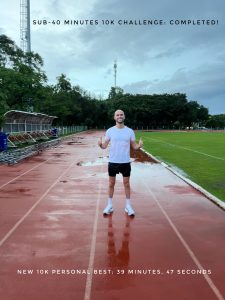Last week, I found myself on my hands and knees trying not to vomit, with my whole body in agony and my racing heart feeling like it was going to explode out of my chest.
Oh, and it was 41 degrees Celsius with high humidity.
I looked down at my Garmin watch with a grimace, and it confirmed something that made all that pain and anguish worthwhile: I had finally become a sub-19-minute 5k runner with a time of 18 minutes and 51 seconds.
On the third attempt, after three months of training, I placed my flagpole in the land of sub-19 for a 5k run—a lifetime first for me and a new personal record by 45 seconds.
As the Strava kudos swarmed in, I was intoxicated on dopamine and inebriated on runner’s high. I drove to my favourite ice cream shop for a celebratory double-scoop mint choccy chip.
I took notes for anyone who wants to become a sub-19-minute 5k runner or simply wants to run a faster time.
Why Running a Sub-19 Minute 5k Mattered To Me
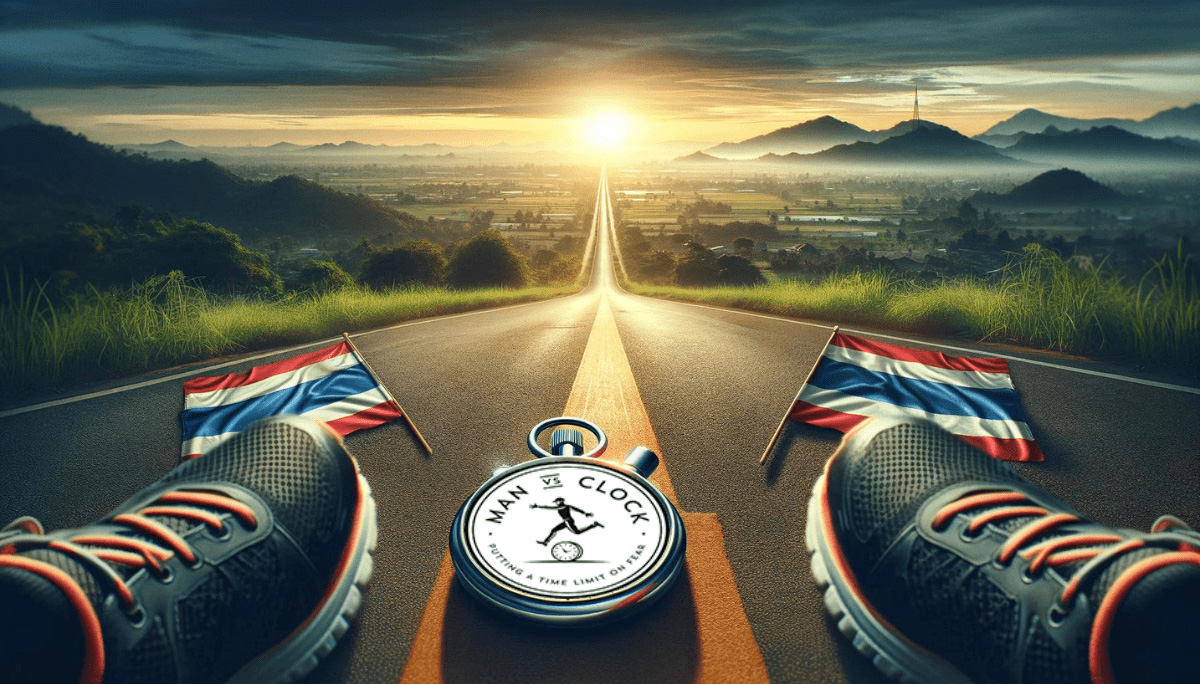
Running a sub-19 5k became an obsession of mine at the turn of the year. I have a solid idea in my head for times that I want to achieve in 5k, 10k, half marathon, marathon, 100 kilometres and 100 miles, so it made sense for me to start with my 5k running goal.
I also am on a quest to show men around my age (40) that 40 is the new 30 and to take charge of their lives by starting with health and fitness.
I was initially going to go for a sub-20, but thankfully, after chatting with a friend who also runs and is big into fitness, we both agreed that this wasn’t a real challenge for me as I had done it a few times before.
Maybe only twice, but it had been done and recorded, whereas a sub-19 had not. I believe that a genuine challenge should be scary enough to catapult me into action and daunting enough to doubt its possibility.
So I did what I always do in such situations: I put a time limit on it and got to work immediately on making this happen. I did it in 3 months, exactly half the time of the 6-month challenge I announced.
Challenges That Almost Prevented Me From Running a Sub-19 5K
It wasn’t all plain sailing, and many obstacles stood in the way of my reaching this goal. Many plans online involve heart rate training, speedwork, and mileage.
So did mine, but life happens and throws curveballs at us, and we have to just try and do our best in a sub-optimal environment.
High Stress

I’m not exactly known for being a bastion of tranquillity, but these past few months have been considerably stressful. I sold my apartment but was still living there before I sealed the deal, and I had to leave at the last minute while potential buyers checked it out.
Thankfully, the 19th person made an offer that I accepted.
Then there was finding a new house and the stress of finding one I liked. I finally found one after 24 viewings, and then came the financial burden of buying furniture and trying to work and train simultaneously.
I remember reading when I was in my late 20s that moving home is said to be as stressful as a breakup and the death of a loved one. I rolled my eyes with dismissiveness.
While I still think it’s ridiculous to compare house moving to intense emotional grief of that level, I will concede that I downplayed this life event somewhat – moving home is very taxing. Stress is a killer when you’re aiming for an impressive sports performance.
Lack of Sleep
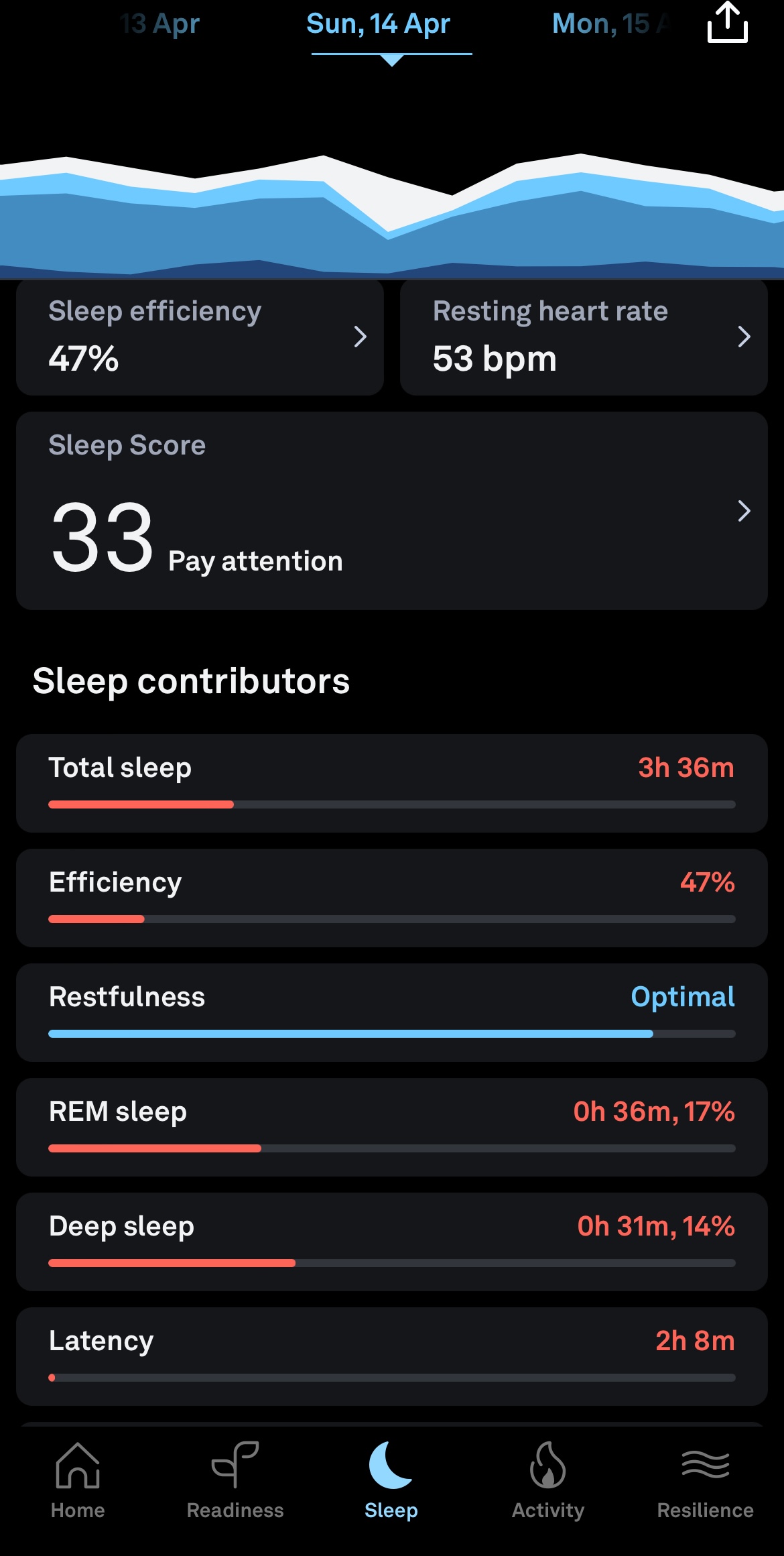
We all have individual responses to stress. Some people get headaches; I feel stress in the pit of my stomach, which obliterates my appetite for food.
Some people eat more when stressed, and some sleep more when tensions are high as a coping mechanism.
I am the personality type that can not sleep when I am stressed. Little food and barely any sleep were my biggest battles at the start of this sub-19-minute 5k running challenge.
Training on Treadmills
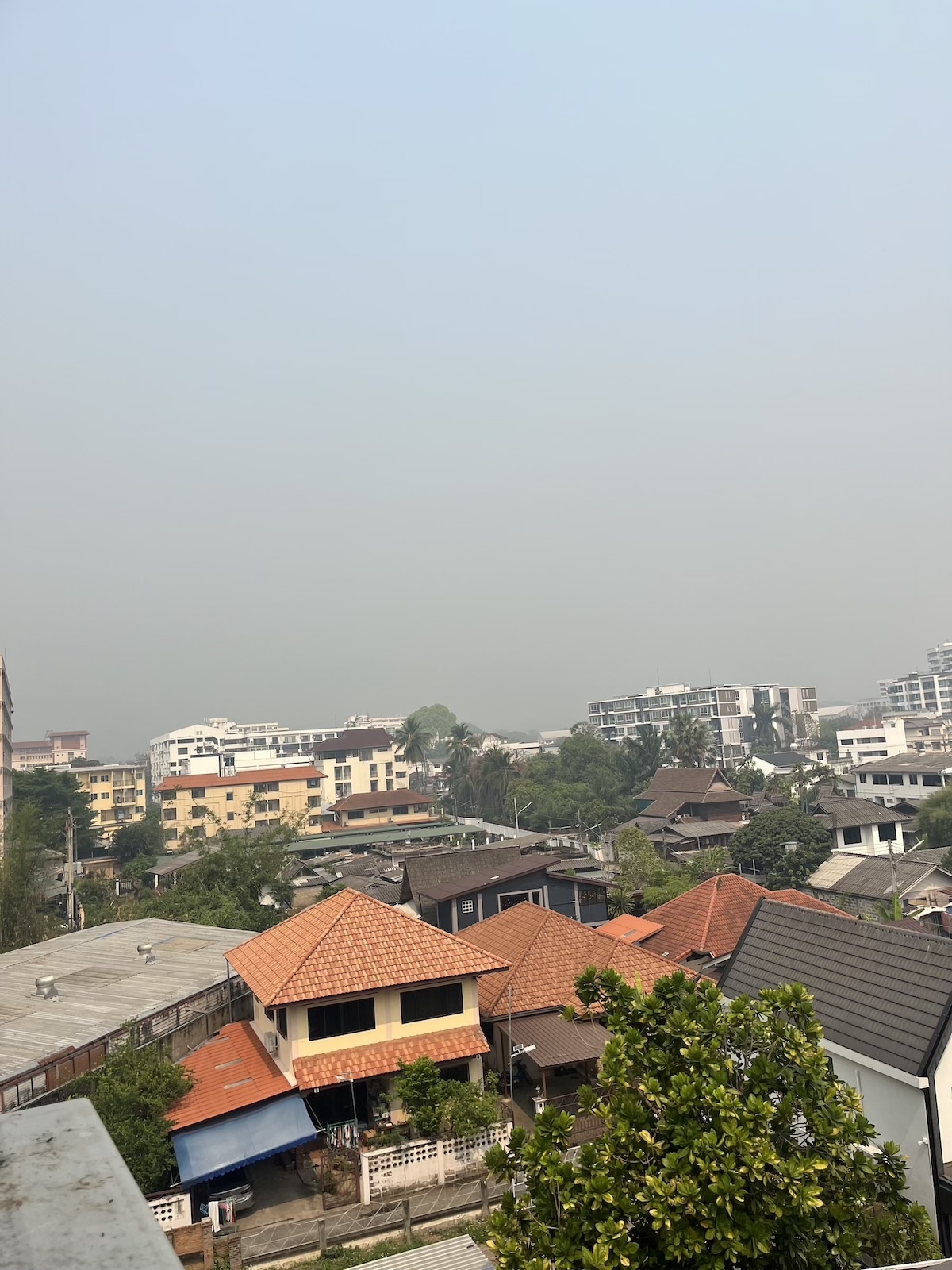
I mentioned in my sub 19 5k running plan that the city I live in, Chiang Mai, is sadly the most polluted in the world for 2-3 months or so for what is known locally as “burning season”, which correlated with my training for this goal.
This meant I had to train, for the most part, on treadmills, which presented two problems.
First, I hate treadmills, and tasks are always harder when you don’t enjoy them.
The second issue was my speedwork took a hit. I swear I am not making this up, but I temporarily broke FOUR treadmills in my gym, running fast on them with either tempo runs or interval training.
It was like a Curb Your Enthusiasm episode, the personal trainer coming over with that “oh, you again” look on his face as I jump onto the next one or sometimes leaving with frustration and embarrassment.
Treadmills are also not good training for running on the road or a track; they are biomechanical nightmares that do not prepare you for the environment you are training for.
Heat & Humidity
I live in Thailand, and it just so happens that I chose to try and run the fastest 5k of my life in the heart of Thai summer! Due to the menacing sun, even locals gave me weird looks or asked me if I was crazy on some days when I ventured outside.
Not only do you fatigue faster in the heat and lose vital minerals through sweating, but it’s almost impossible to train in Zone 2 heart rate, as your numbers simply aren’t the same in the heat, and your heart rate rises much faster than it would in the cool.
On most days, I knew deep down that if I were in England, my heart rate would be lower at the pace I often ran and that my fastest time would almost certainly be quicker. But tough shit… I chose to live in Thailand, and these are the cards that were dealt on the table at the time.
Imposter Syndrome
I have clearly been struggling with self-confidence lately, as I honestly could not “see” myself as a sub-19-minute 5k runner for a long time in my head.
I could maybe just about envisage myself hitting the sub-20 world again, but the last all-out effort 5k I made before announcing this challenge was at 21:03, and my first attempt after two and a half months of training was even slower at 23 minutes!
I felt lousy that day, and it was in peak 44 degrees Celsius heat, so it made sense that I failed. However, confidence is everything in this game, and mine admittedly took a huge knock when I was not only 4 minutes off my goal but also seemed to have slowed down a great deal.
I was devastated!
Retrospectively, I had 3 hours of sleep, my digestion wasn’t great that day (I’ll spare you the details), and it was as hot as hell outside. I had absolutely no right to a PR in those conditions. Alas, I got in my head, and I wrestled with the mocking voices of my harrowing self-doubt.
Mark Zuckerberg

Last year, Mark Zuckerberg, the famous cyborg CEO of Facebook and Instagram, went viral for his fitness levels. He has a good Murph score, and his 5k running time was equally impressive: 19 minutes, 34 seconds.
While he is partially responsible for accidentally creating the Orwellian dystopia that is social networking, I admittedly put that grievance aside as I purred over his running time.
I guess I’m fickle.
Yes, he may be a billionaire with the best access to the world’s experts to achieve this feat, but it is an objectively good time for someone new to running or not a consistent runner.
Down in the dumps after my pathetic first attempt at a sub-19-minute 5k, I licked my wounds. After a good night’s sleep, more coffee than I can tolerate, and fast-acting carbs, I returned to the track to find my dignity with my second attempt at running a sub-19 5k.
I went for an all-out effort. I ran my tiny little arse off, and even though I did not run the 5k in 19 minutes, I finished with a new personal record of… 19 minutes and 34 seconds.
The *exact* same 5k running time that the mainstream media were gushing over Mark Zuckerberg running.
Not a second slower, not a second faster. Where was my army of sycophants?
Zuck and I were 5k equals. I did not like this.
I thoroughly enjoyed the Michael Jordan “The Last Dance” documentary, not because I am a basketball fan but because I am a fan of greatness, and I love to find out how great people think and what gets them going.
Jordan said he used to invent enemies in his head via fake stories of them wronging him or talking shit about him; they were often opposition players, and he used this as fire to perform at a higher level.
I chose to do this with Zuck. In my head, if I slept poorly, it was because of Mark Zuckerberg, and he needed to be stopped. If I had onions in my meal after a polite request to leave them out – it was Mark pulling the strings in the kitchen.
Bad experience with a work client? Zuck.
Cut off in traffic? Probably Zuck. Almost definitely Zuck.
For me, Zuck’s existence on earth was solely to make mine miserable because he was exactly, to the very last second, as fast as me. I could visualise him with his creepy, smug smile running alongside me on a neverending track – like the T-1000 guy from Terminator 2, in a lifetime of 5k purgatory torture.
Mark was here to steal my girl, kill my dog and eat my last chocolate Hobnob.
I wasn’t having any of that.
There was only one option: to become faster than Mark Zuckerberg over 5 kilometres. That’s precisely what I did on my third attempt, beating Mark’s (and my own) time by 45 seconds, me finishing my 5k in 18 minutes and 51 seconds.
I heard he and Elon may be fighting in the Colosseum Arena.
Clickbait, that’s all that was! I’ll tell you a better idea: Zuckerberg vs me over 5k on any Olympic track he desires. I’ll give him a year to train to catch up on those 45 seconds.
See you there, Zucks. Have fun looking at the bottom of my shiny new Vaporflys, you life-ruining dork.
How I Became a Sub-19-minute 5K Runner
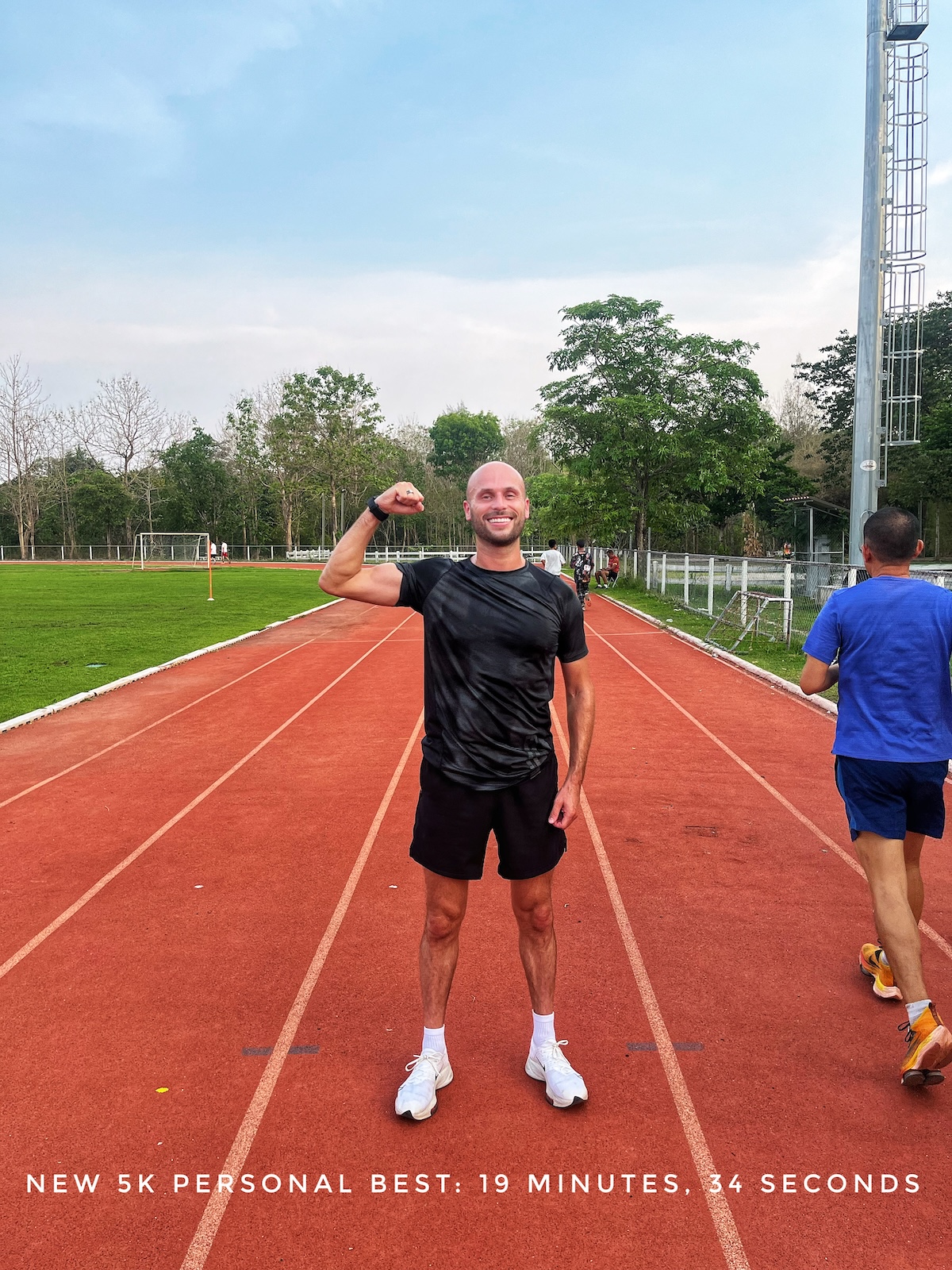
So, despite the obstacles, I did it—I became a sub-19-minute 5k runner with a time of 18:51 after only three months of my 6-month training plan.
I’m over the moon, but you aren’t here because of my precious feelings—you want to know what the main needle-movers were, maybe so you can also become a sub-19-minute 5k runner or improve your 5k running time.
These are the main factors in finally becoming a sub-19 minute 5k runner.
I Took a VO2 Max Test
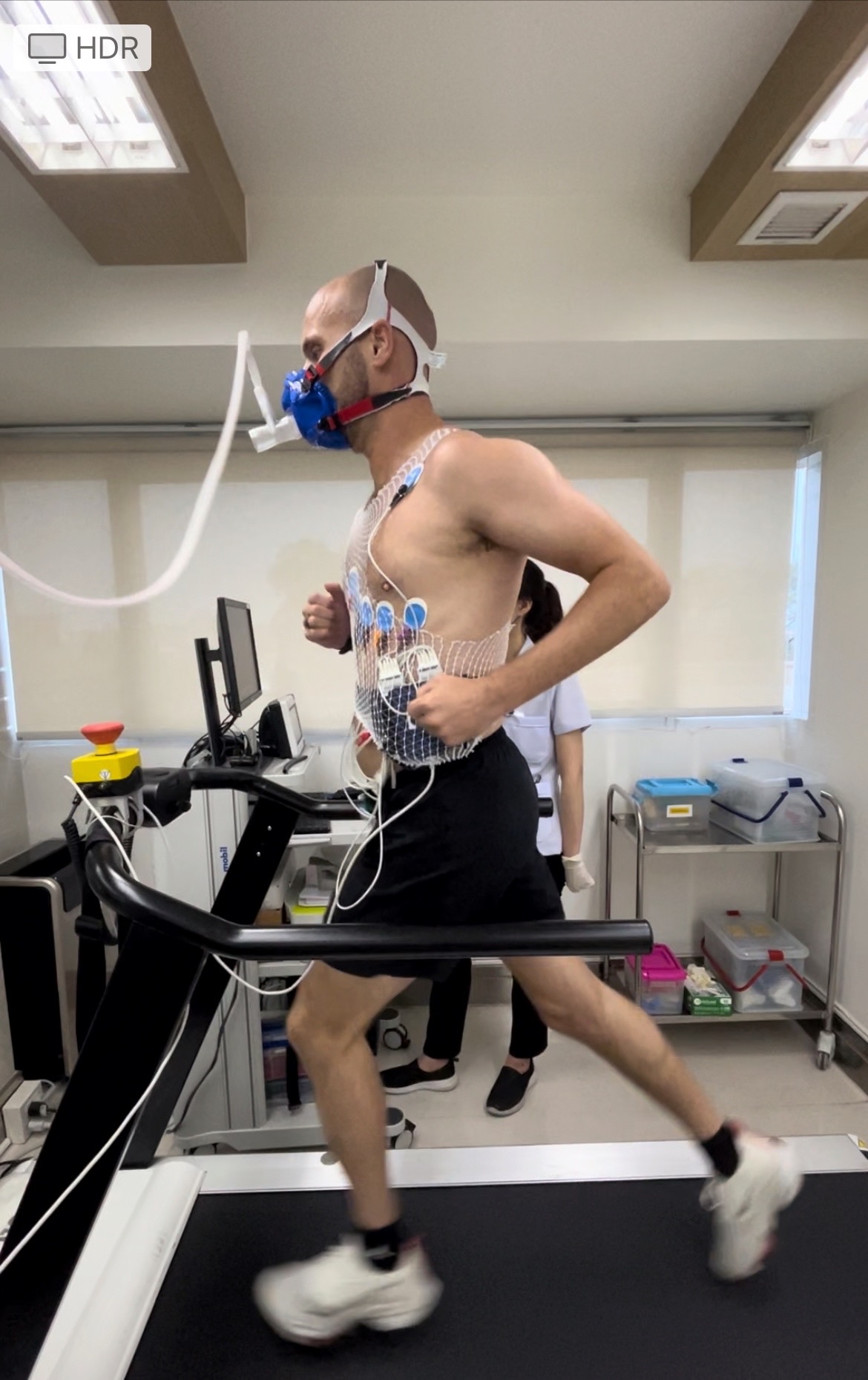
A VO2 max, or maximal oxygen uptake, is the maximum amount of oxygen your body can utilise during intense exercise. It’s a key indicator of aerobic endurance, and understanding it can significantly enhance your training and performance. It’s also an ideal way to learn your heart rate running zones.
I read about Zone 2 heart rate training ad nauseam. The basic theory is that consistently running slower for longer distances for roughly 80% of your training will build up your cardio, add mileage to your legs, and equip you to run faster when you attempt to do so, all while running at a conversational pace.
I tried being a cheapskate by doing a DIY Lactate Threshold Test on my watch a few times and knew deep down that it was inaccurate. So, I reluctantly paid for a VO2 max test at a local private hospital, and I am so happy with this decision.
It was intense, with two nurses and one doctor standing over me, running on an ever-increasingly fast treadmill with a mask on my face and me covered in wires as I faced a massive mirror.
The doctor was also a runner, and he reverse-engineered my VO2 max effort. I left the clinic knowing that my actual Zone 2 heart rate training was 109-127 BPM, and we agreed that my tempo run for this sub-19-minute 5k run challenge would be a 10k at 43 minutes.
Anyone who wants to take their running times seriously should get a VO2 max test as soon as possible. It is the gold standard for endurance sports performance and making a plan of attack to improve your running time.
I Prioritised Zone 2 Training
Running at Zone 2, also known as “conversational pace”, is an exciting concept for several reasons. The idea that running slower on a more regular basis will lead to you becoming faster is supported by the fact that most elite distance runners worldwide do this type of running for around 80% of their training.
If it’s good enough for Eliud Kipchoge and Kelvin Kiptum (RIP), it’s certainly good enough for me.
Also, it was always one of those dorky, underground things that only a minority of people knew what it meant. Lately, it has catapulted into the mainstream global consciousness after gaining significant attention from the endurance community in recent years, and I’m starting to see the term more than ever.
I initially didn’t like my Zone 2 runs, but I have grown to love them. They’re more sustainable for my body, and I get meditative when I run slower. I’m sure this was the main factor in my nailing down a sub-19 5k run.
Consistency
The other reason I became a sub-19 5k runner was consistency. No matter how chaotic my day was, I did not allow myself the excuse not to run. If an upcoming day were particularly busy, I would plan around it.
Just like my running 5k every day for 30 days challenge, the ticking clock added urgency to my goal, and I knew skipping a day when I was perfectly capable of training would be one less day to make it happen.
Focused on Running Form
When focusing on running, especially for distances like the 5k, there are several key aspects to consider to optimise your performance and reduce the risk of injury. While individual biomechanics vary, there are general principles of good form that can benefit most runners.
For example, when tired, I tend to stick my neck out like an aggro ostrich. This is an awful habit that can lead to neck and shoulder strain. At first, I focused on this by keeping my head and neck neutral.
Once I mastered that, I concentrated on a midfoot strike instead of striking with my heel first. When that became more natural, I worked on a cadence to transition from one foot to the other more gracefully than my usual angry stampede.
Lifted Weights (Smartly)
One surprising lesson that I took away from my Marathon des Sables experience and running a 100-mile ultramarathon is that strength training is not just “okay” if you are a runner—it’s necessary. You are seriously missing out on running gains if you don’t incorporate strength training into your running plan.
But you have to be smart about it.
There’s nothing wrong with training for hypertrophy if that’s your cup of tea (looking sexier, maximising muscle mass), but when it comes to running, doing 4 x 12 sets of bicep curls for the girls will not improve your running time.
Don’t worry; you can still improve or maintain your body composition by putting more “phwoar” into your core by choosing resistance exercises that will transfer into running.
Due to a history of shoulder and wrist injuries, I tend to stick to calisthenics-based exercises for the upper body using bodyweight or gymnastic rings and dumbbells rather than barbells.
Bodyweight exercises force you to constantly engage your core muscles, which helps posture for running.
Also, single-leg workouts such as walking lunges, Bulgarian split squats, and box step-ups increase leg power and work on imbalances simultaneously, adding more bang for your buck for your running-assisted workout.
Took The Stairs/Walked More
I try to do this anyway, within reason, and I think unless you’re pregnant, disabled, or old, you should leave the elevator for those people and take the stairs most of the time.
Little wins like this all add up, leading to stronger legs. Stronger legs can lead to faster running and are less likely to become injured.
Ate Healthy Food
Between moving homes and having to keep my place like a showroom before it sold, I lost access to my kitchen, making eating healthy harder.
Harder doesn’t mean impossible, though. I made a valiant attempt to ensure I got enough daily protein for recovery, fueled my workouts with good carbs, and focused on recovery minerals such as zinc and magnesium.
I feel good when I eat black beans and spinach post-run as my main carb sources. These are rich in magnesium and zinc; also, dark chocolate is high in hormone-supporting healthy fats and magnesium… I love inventing new excuses to eat more chocolate!
Drank Less Alcohol
I’m not an angel when it comes to alcohol, but over the years, I’ve made a serious effort to drink less, and it has been a success so far.
So much so that me and three friends have a Google spreadsheet where we add our “tokens” to it every time we drink alcohol. Our system has flawed rules, but perfection over progress is what we are looking for.
There’s no lying to yourself on the sheet unless you want to, but that’s something you’ll have to have to square away with the man in the mirror.
I Embraced Coffee
I will never understand how the world has been gaslit into believing that coffee tastes nicer than a lovely cup of tea. Still, I do get the power that coffee gives for a workout – particularly in the morning as someone who is not a natural morning person.
I’ve experimented with not having coffee for long periods often, and I’m more convinced than ever that I’m better off having it than not when working out.
I don’t drink coffee after 1 pm, but if I go for an intense run later in the day, I’ll submit to its magical powers.
I Added Mobility Exercises
Running requires a full range of motion in various joints, including the hips, knees, and ankles. Mobility exercises help improve flexibility and joint range of motion, allowing us to move more freely and efficiently while running.
Physiotherapists have identified my hip flexors and hamstrings as weak points, so I focused on mobility exercises that increased mobility to these areas on most mornings and pre-run.
My non-bendy body has been known to knock the zen out of most yoga instructors. I’m working on it.
Smart Supplementation
I mentioned earlier that my sleep suffered at the start of this challenge. I wanted to fix this with the help of supplementation, but I don’t like 5-HTP, as some suggest, as it makes me irritable, and Melatonin gives me dreams that would make the “Saw” movies seem like a rom-com.
So I took the advice of everyone’s favourite hunky online neuroscientist, Dr Andrew Huberman and took Magnesium Threonate, Apignenen and L-Theanine and Glycine every night 1 hour before bed.
It worked wonders.
Fought Against My Natural Pessimism
I am naturally a pessimist, and I wish this weren’t the case, but I’d rather work on changing that than wear it as a badge of honour.
It’s braver to be optimistic than pessimistic (if it’s your natural state), and neuroplasticity is there for the taking if we are willing to capitalise on it. I worked on my mind with meditation and journaling any invasive thoughts, and every few seconds that I got faster in training; I started to believe that sub-19 minute 5k land was on the horizon.
I’m not the only one who gets held back by negative self-beliefs. When setting physical challenges, we should work on the mind as much as our bodies to make them happen. It’s easier said than done, but it’s worth the effort.
Conclusion on Me Becoming a Sub-19 Minute 5k Runner
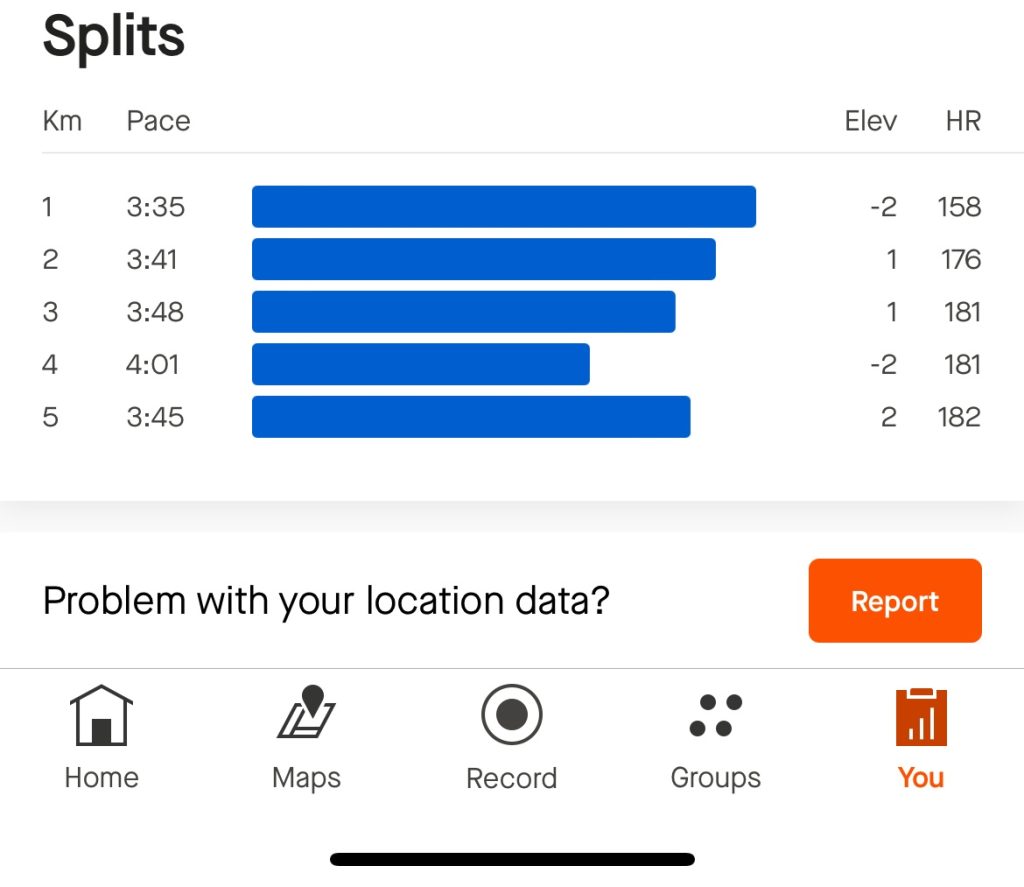
I didn’t reinvent the wheel too much on this one. Make Zone 2 training the foundation of your running, add in weekly speedwork (1-2 times a week), eat for performance and recovery, and try your best to get some quality sleep no matter what life throws at you.
In addition, stretch often—particularly on your areas of weakness—stay consistent, and work on making that annoying bully in your head who says you are not good enough have less of an impact on you. The only way to do that is by getting to work and (literally) outrunning your negative self-belief.
A final factor in my becoming a sub-19 5k runner is that I put a time limit on it. I greatly advocate declaring war against the clock for people to reach their goals, as it adds a welcome kick-up to the bum that we need now and then.
Best of luck on your 5k journey.

